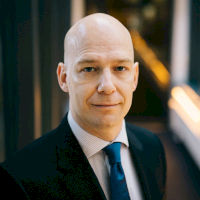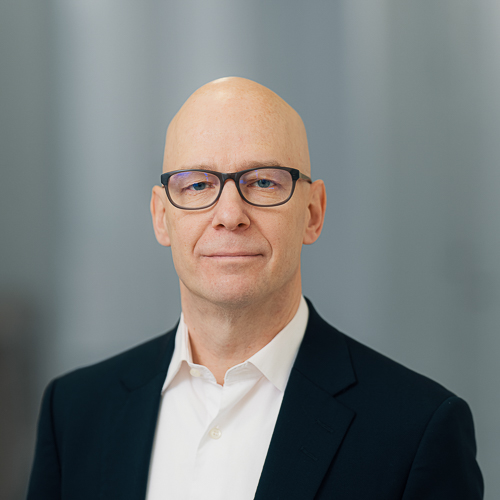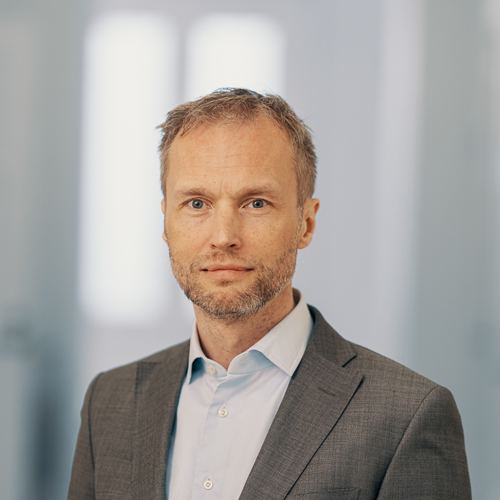We sat down with Peter Lindahl, Evli’s Head of Tactical Asset Allocation, Janne Kujala, Head of Nordic Equities, and analyst Ville Tiainen to discuss what will drive growth in 2021 and why investors should bet on the Nordics.
What will be the key market drivers for 2021 and how will they influence the Nordics?
Janne Kujala: I’d say global interest rates, fiscal stimulus and recovery in economic growth will be the key drivers for 2021.
Peter Lindahl: The reflation theme will be very strong over the next year, as we will see global growth coming back quickly. We will have some kind of rotation happening between different themes, from more defensive to cyclical. That is more favourable for Nordic equities, especially Finland and Sweden, as the small- and mid-cap theme – smaller companies normally do better in a reflation environment where growth and earnings are recovering.
Ville Tiainen: In the autumn, we did some research regarding the benchmark we use in the Swedish small-cap fund and Nordic index and compared that against the MSCI Europe Index. The main finding from that was industrial companies have a much higher relative weight in the Nordics than in Europe, so it underlines what Peter just mentioned.
Looking globally, what are the macro factors investors should bear in mind?
Peter: From the macro side it looks very good globally, so we will have a strong recovery going into next year. The Nordic region normally does well in this kind of environment, because it is cyclical and has high exposure to global growth. Then, of course, you have the high exposure to mid-caps and that makes it interesting in the reflation cycle.
Janne: Also, interest rates are low. We are coming out of a recession, there is stimulus in the US which is also coming to Europe. We also have vaccines on the way and countries are set to open up again in H1, so it is a pretty positive sounding cocktail.
Peter: Policymakers will not take away the stimulus as quickly as they did after the financial crisis in 2010, so they will go a little too far by pushing further and making the environment pretty good for cyclical themes and therefore the Nordics.
Ville: One mega-trend in the investment space relates to the ESG approach to investing. That has been at the core of many companies’ ideals in the Nordics for a while now and it has become much more important over the past few years. This, of course, will only continue.
What makes the Nordic region unique when compared with, let’s say, the rest of Europe?
Peter: We have a more cyclical economy than the rest of Europe. There are companies of higher quality, perhaps, and the Nordic market is biased towards industry and exports, so we are more exposed to global growth than the rest of the continent. That is the unique aspect of the region we are in.
Janne: I agree with the quality theme Peter just mentioned. You can look at it from different angles and while we can’t cover them all with data, I believe both ESG awareness and integration into company strategy are more advanced in the Nordics than elsewhere in Europe.
Ville: When we compared the Return on Equity (ROE) in the Nordics with the MSCI in Europe, the ROE for different industries or sub sectors was higher across almost every sector in the Nordics. Here, we had the VINX index as a benchmark.
Janne: Exactly. You see it in the financial sectors, as well. Nordic banks are not expensive, but they are clearly valued higher than European banks, so you see that quality difference in that one sector as well.
Peter: I agree with that and can confirm that the MSCI Nordic ROE level is currently 13% and for the European index it is 4.3%, so you have three times higher ROE in the Nordics.
Where does this quality come from?
Ville: Simply put, it is well-run companies in well-functioning societies. Explanations for this could include relatively strong and stable governments and economies, global export-oriented mindset, consistent business focus and selected industries and niches.
Peter: From a cyclical perspective, the Nordic region has survived the COVID recession much better than the rest of Europe, so we have had a milder downturn and that shows up in earnings numbers as well. The Nordics will therefore recover much quicker.
Is there a danger we will oversaturate the Nordic market?
Peter: There is a risk that we are creating a bubble, of course. In the long-term, quality is good but in the short-term it could become a negative thing if investors start switching to junk-type companies.
In the long term, the Nordic story is still favourable because you have stronger companies, higher growth and better profitability, from a market and investment perspective.
“Buying cheaper companies in the Nordics just makes sense” – is this a fair statement?
Peter: It is. There are obviously more expensive companies in the Nordics as well, but if you take the valuation of the company into consideration it might make sense to look for more of a value type of fund or strategy. You also have to consider the valuation of the company, because you don’t want to overpay in the long term, as you end up with a portfolio that is too expensive and falls in value in the longer term.
Janne: Yes, in principle you want to buy cheaper stocks, but for the last ten years or so it really hasn’t worked that way across the global equity markets. Expensive stocks have got more expensive, so if you bought cheaper stocks ten years ago then you haven’t bought too well.
Peter: Good point. We are going into a cycle where bond yields could rise and the reflation theme is coming back. In that kind of cycle, you normally have the cheaper companies doing better, so it could make sense to have this kind of strategy in a reflation cycle.
How does Evli’s market outlook differ from others?
Peter: At Evli, we strive to change our view when the facts change. We have a very systematic way of looking at things, trying to leave out any kind of investor psychology to impact our market outlook. We stick by what we say and always try to become better at what we do.
Janne: The equity markets in the Nordics have performed very well this year as well. The composition of the sectors within the four Nordic countries differs somewhat, but Finland and Sweden have done exceedingly well this year when it comes to stock market returns. The Danish equity market in general is a bit more defensive, but still up more than Stockholm or Helsinki. Next year, the Nordic equity space will also be a good place to be, especially if we have the reflationary environment that looks likely now.
Can you sum up the market outlook for investors in one word?
Peter: At the risk of repeating myself, I am going to go with reflation, along with strong growth and strong cyclicality.
Janne: I’d say bull-market. That is what we are in right now and as long as we are, it makes sense to own equities. This, of course, applies globally. If you know where the global equities are headed, you know where their Nordic counterparts are headed.
Ville: I would continue from Janne’s comment and say sustainable bull-market from a Nordic space perspective.
The team
 Peter Lindahl, Head of Tactical Asset Allocation, Head of Systematic funds. Peter has top-down view with a strong macro flavour.
Peter Lindahl, Head of Tactical Asset Allocation, Head of Systematic funds. Peter has top-down view with a strong macro flavour.

Janne Kujala, Head of Nordic Equities, manager of the Evli Finnish Small Cap, Evli Swedish Small cap and Evli Finland Select funds. Janne is a street smart PM with proven sense for riding the waves and making money in the Nordic market.
 Ville Tiainen, Analyst, Nordic Equities. Ville is following companies and sensing the next big trends in the Nordic and global market.
Ville Tiainen, Analyst, Nordic Equities. Ville is following companies and sensing the next big trends in the Nordic and global market.















